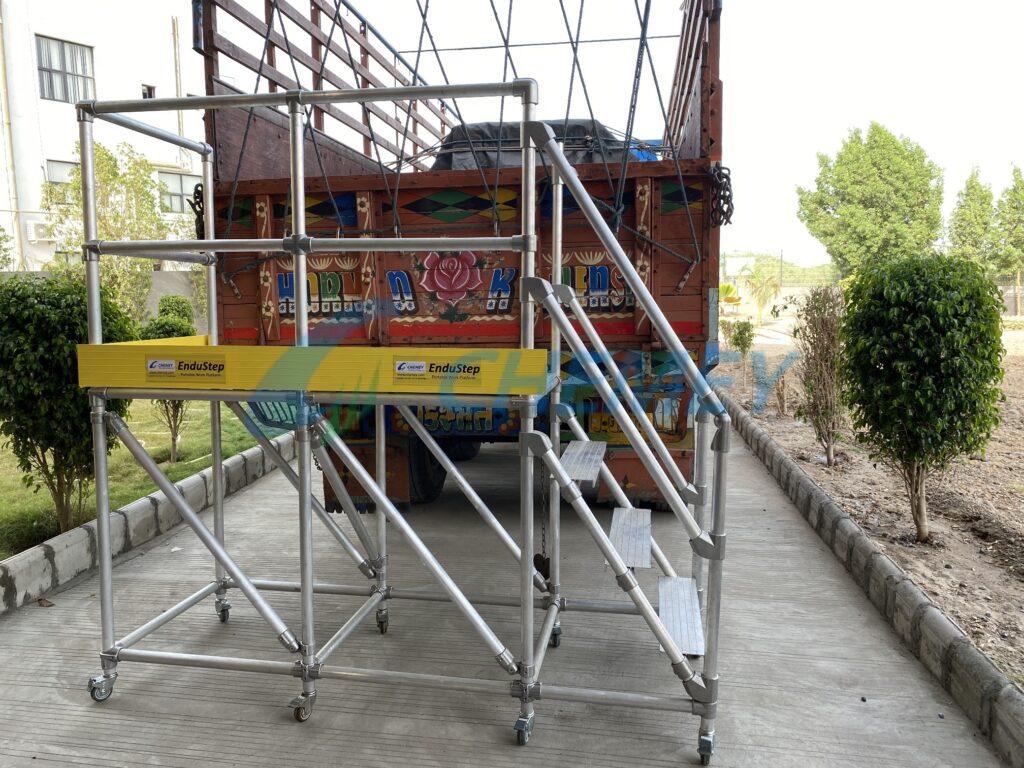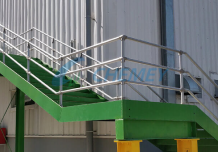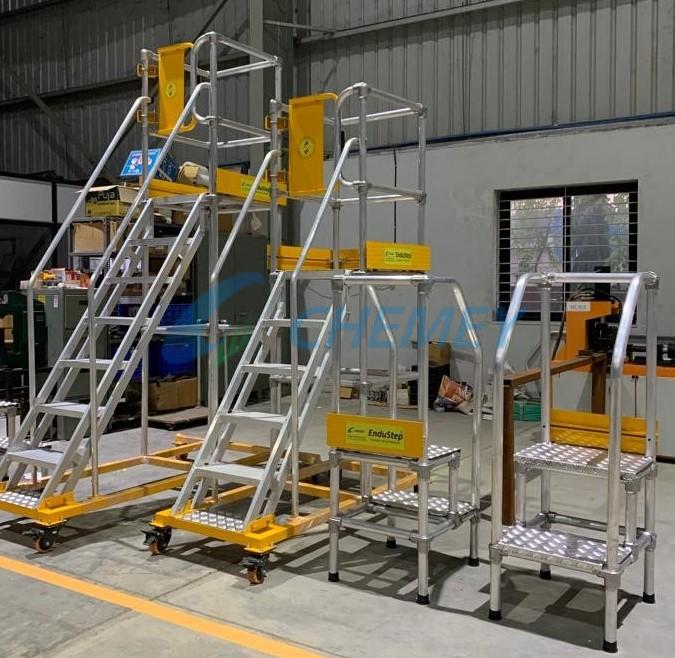Key OSHA Standards for Work Platforms
According to OSHA: “A platform means a walking-working surface that is elevated above the surrounding area.”
Since January 2017 when OSHA completely rewrote the standard 1910 Subpart D: Walking Working Surfaces, it has been nearly impossible to get a straight answer on what fall protection needs to have to comply.
The update on OSHA standards for work platforms established the requirement for employers to protect workers from fall hazards along unprotected sides or edges that are at least 4 feet above a lower level. It also established requirements for the performance, inspection, use, and maintenance of personal fall protection systems.
Here is a list of important OSHA standards for work platforms that you may not be aware of
1. Any working surface 4 feet or higher must be protected with guardrails on all sides at least 42″ tall and have to withstand 200 pounds of force.
OSHA 1910.29(b)(1): The top edge height of top rails, or equivalent guardrail system members, is 107 cm, plus or minus 8 cm, above the walking-working surface. The top edge height may exceed 114 cm.
1910.29(b)(3): Guardrail systems are capable of withstanding, without failure, a force of at least 890 N applied in a downward or outward direction within 5 cm of the top edge, at any point along the top rail.
One important distinction of OSHA 1910 Subpart D is that a guardrail is what is on top of the platform, whereas a handrail is what is along the staircase. Handrails have a different height requirement than guardrails.
The guardrails must be on every open side of the platform. In instances where the platform is up against another vertical surface (such as the equipment being accessed), and that fully protects the opening, guardrails are not required on that side. In that case, it is still critical to ensure railing covers any gaps.
When you’re performing maintenance tasks, there is a good chance you will be setting tools, parts, and hardware on the floor beside you. In order to prevent a tools and parts falling off the platform and smacking a coworker on the head, 100 mm tall toe boards are required on all open sides of the platform (excluding openings). Guardrail systems should also be capable of withstanding 890 N of force applied in a downward or outward direction.
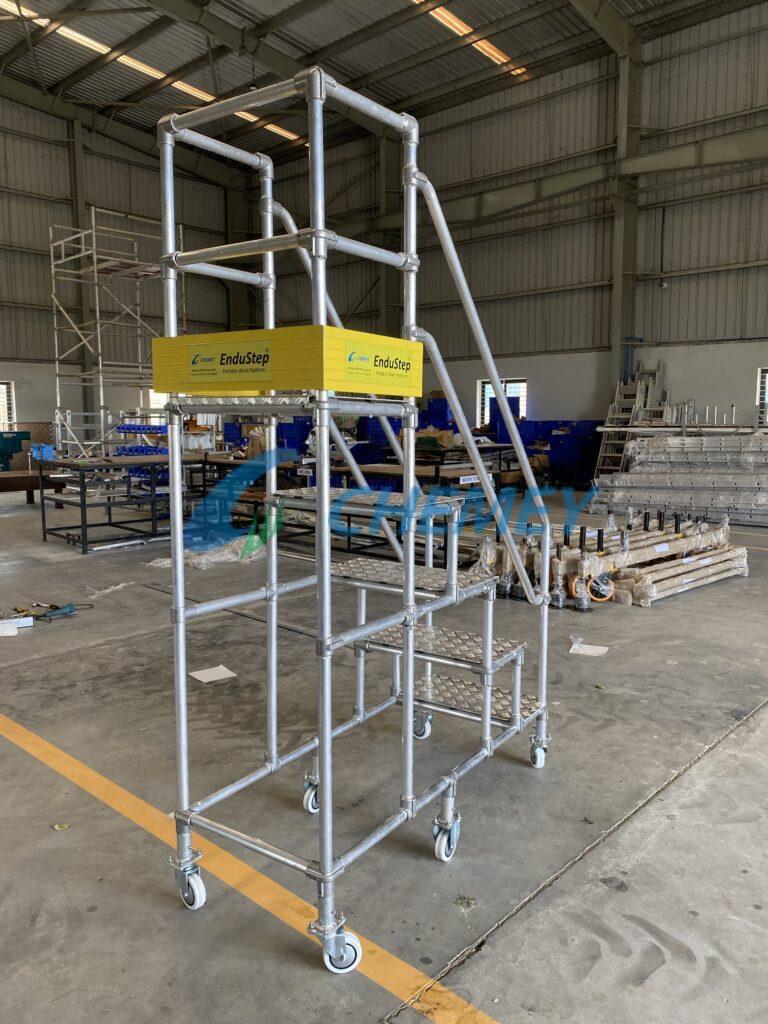
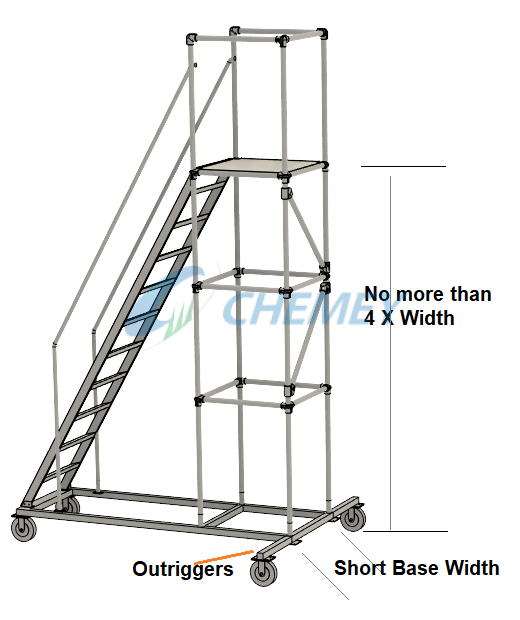
2. The platform’s height cannot exceed 4x its base width without additional stabilizing support.
OSHA 1910.23(e)(1)(vi): The maximum work-surface height of mobile ladder stands and platforms does not exceed four times the shortest base dimension, without additional support. For greater heights, one must use outriggers, counterweights, or comparable means that stabilize the Mobile Work Platforms and prevent overturning.
If you need to access something at a great height but have limited space, consider a base with extended caster beams that can slide underneath your equipment and maintain this 4:1 ratio. These outriggers will provide enough of a base to keep your platform stable.
If you’re working in an area where extended caster beams at the base of the system are prohibited due to ground-level interference, counter-balance weights may be used to provide the stability required.
3. Stairs should have uniform step interval of no more than 250 mm, a tread depth of at least 240 mm, and a width of at least 560mm.
OSHA 1910.23(e)(2)(1): Mobile ladder stands, and platforms have a step width of at least 16 inches (41 cm). Steps are uniformly spaced and arranged, with a rise of not more than 10 inches (25 cm) and a depth of not less than 7 inches (18 cm). The slope of the step stringer to which the steps are attached must not be more than 60 degrees, measured from the horizontal;
4. Self-closing safety gates are always required around openings (such as ladder holes), unless the opening is offset and nobody can fall directly through the hole.
OSHA 1910.29(b)(13): When guardrail systems are used around holes that serve as points of access (such as ladder ways), the guardrail system opening (b)(13)(i) has a self-closing gate that slides or swings away from the hole, and is equipped with a top rail and mid-rail or equivalent intermediate member, or (b)(13)(ii) is offset to prevent an employee from walking or falling into the hole. Self-closing safety gates are critical for OSHA compliance; you have to ensure that your technicians cannot back through a hole in the guardrail or push the safety gate open without intending to. This is most commonly encountered at the top of ladders. Safety gates are often spring loaded and open inward then close behind you when you enter the platform. For extra safety precaution, consider using an interlock mechanism to ensure the safety gate cannot be opened when it’s unsafe.
Staircases only require a safety gate when they are not attached to a platform In this instance, you must have 22” of clearance on the platform to allow the user to open the safety gate inward and be able to close it behind them.
1910.25(b)(5)(ii): When a door or a gate opens directly on a stairway, a platform is provided, and the swing of the door or gate does not reduce the platform’s effective usable depth to less than 56 cm for platforms installed on or after January 17, 2017.
While staircases that are connected to a larger platform do not require a safety gate, one may be added to your system if desired.
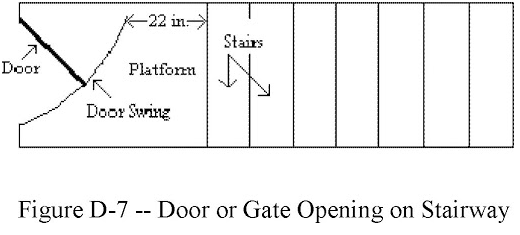
5. The platform must be capable of supporting at least four times its rated capacity.
OSHA 1910.23(e)(1)(iii): Mobile ladder stands and platforms are capable of supporting at least four times their maximum intended load.
Load rating requirements vary depending on the need and how many people/how much equipment will be on top of the system at a time. Regardless of it, the system will be designed to withstand 4x the rated load before failure. This is proven out through engineering analyses or physical load testing during the design and manufacturing process.
The number of safety standards that apply to work stands can be overwhelming. If you’re unsure whether your platform is in compliance, ask the experts.
Whether you’re looking for crossover platforms to safely traverse rooftop obstacles or portable work platforms and other Mobile Aluminum work platforms, our Endu Step industrial work platforms can be configured for your unique project needs. Chemey’s work platforms and step stools made to industry standards, are easy to use and have safety features. These safety features include guardrails, handrails, midrails, toeboards, and safety gates.
